Disclosure: This article contains affiliate links. We may earn a commission from purchases at no extra cost to you, which helps our travel content.
Standing at the edge of Jakar's pine-scented valley, where prayer flags snap in the crisp Himalayan breeze, I felt that familiar dual perspective taking hold—my mother's appreciation for design evident in the intricate woodwork of distant monasteries, my father's environmental sensibilities awakened by the pristine landscape before me. The Bumthang Valley isn't just Bhutan's spiritual heartland; it's a trekker's revelation that manages to balance profound cultural immersion with surprisingly accessible adventure.
Preparing for Bumthang: Gear and Cultural Considerations
My safety inspector instincts kick into high gear when planning remote treks, and Bumthang deserves thoughtful preparation. The valley sits at approximately 2,600 meters, making altitude acclimation essential but manageable for most trekkers. Spring brings moderate temperatures—warm days (15-20°C) and cool nights (often dropping below 5°C).
Layering became my mantra here. I relied heavily on my merino wool base layers which regulated temperature beautifully while trekking between valleys and monasteries. Unlike synthetic materials, merino continues insulating even when damp from unexpected rain or stream crossings (which happened twice during my journey).
Equally important is understanding Bhutanese cultural protocols. When visiting monasteries, I always carried a light scarf to cover my shoulders and removed my hiking shoes before entering sacred spaces. These boots proved perfect for Bumthang's varied terrain—supportive enough for rocky paths yet comfortable for long days exploring temple complexes.
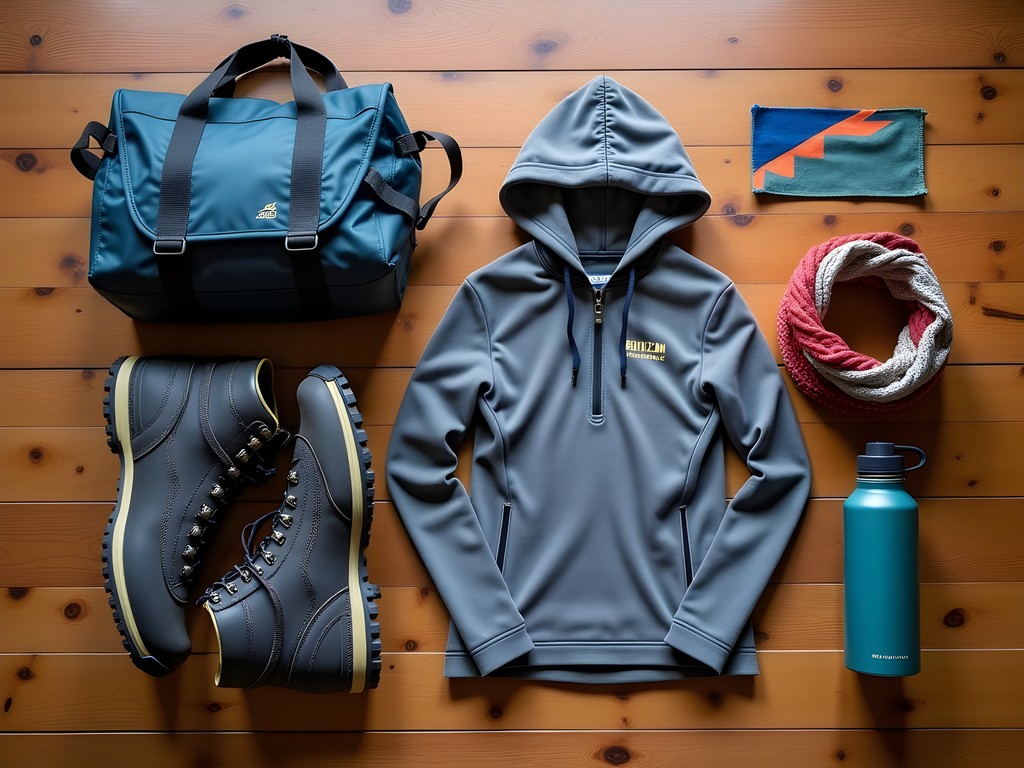
💡 Pro Tips
- Pack a headlamp with extra batteries for early morning temple visits
- Bring US dollars in small denominations for rural areas where card payment isn't available
- Learn basic Dzongkha phrases—locals genuinely appreciate the effort
The Tang Valley Trek: A Sustainable Adventure
The Tang Valley trek became the cornerstone of my Bumthang experience—a perfect intermediate challenge that balances physical exertion with cultural immersion. This 12km route connects several remote villages and monasteries while showcasing Bhutan's commitment to environmental preservation.
Starting from Jakar, I arranged a local guide through my guesthouse (mandatory for most treks in Bhutan). We began at the Mebar Tsho (Burning Lake), a sacred site where the water appears to shimmer with flames in certain light. The trail then climbs steadily through blue pine forests managed under Bhutan's remarkable constitutional mandate to maintain 60% forest coverage.
My trekking poles proved invaluable during steeper sections, particularly when navigating muddy patches after spring rain. These adjustable poles saved my knees on descents and provided crucial stability when crossing the occasional wooden footbridge spanning mountain streams.
What struck me most was the absence of litter—a testament to Bhutan's environmental consciousness and the country's sustainable tourism model. My guide explained how the mandatory daily tourist fee ($200-250) directly funds conservation efforts, healthcare, and education.
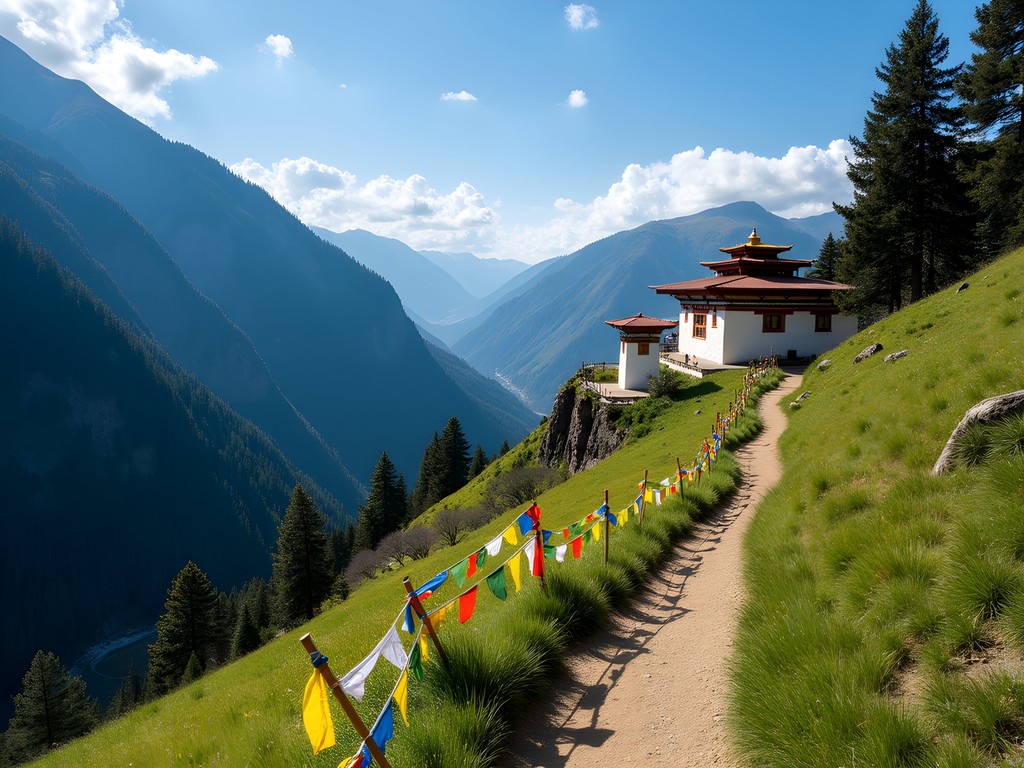
💡 Pro Tips
- Hire a local guide not just for regulations but for rich cultural context
- Trek clockwise around monasteries to follow Buddhist tradition
- Carry a reusable water filter bottle to reduce plastic waste
Sacred Encounters: Kurjey Lhakhang and Beyond
The Bumthang Valley houses some of Bhutan's most significant religious sites, and my methodical exploration of these sacred spaces revealed architectural ingenuity that would impress any design enthusiast.
Kurjey Lhakhang complex, a collection of three temples built over centuries, became my favorite morning destination. Arriving just after sunrise meant I could observe morning prayers and the intricate butter lamp rituals. The main temple contains a cave where Guru Rinpoche meditated, leaving his body imprint on the rock (kurjey means 'body imprint').
Navigating temple etiquette requires preparation. I kept my travel meditation cushion in my daypack, which proved invaluable during longer monastery visits. Unlike typical tourist cushions, this sustainable buckwheat-filled option provided proper support during hour-long meditation sessions that spontaneously developed when I was invited to join local practitioners.
Jambay Lhakhang, one of Bhutan's oldest temples, dates back to the 7th century. My guide explained how the temple was built in a single day as part of 108 temples constructed to pin down a demoness spread across Tibet and Bhutan. The engineering precision required to create these perfectly aligned structures across such challenging terrain is remarkable even by modern standards.
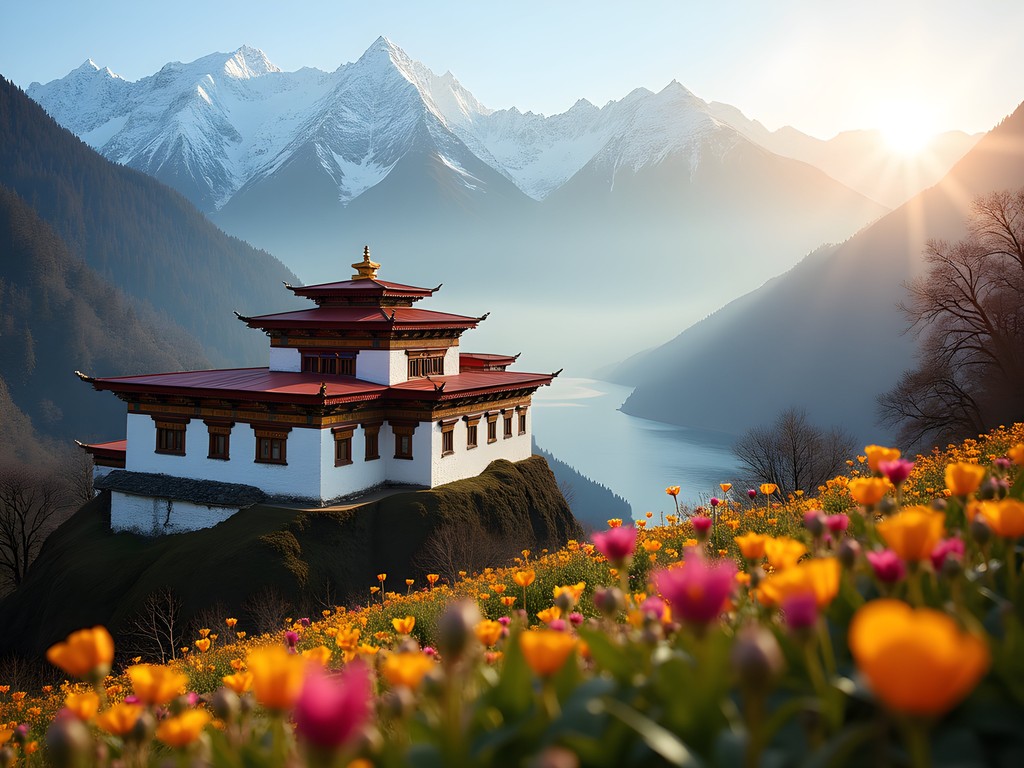
💡 Pro Tips
- Visit monasteries in early morning to witness daily rituals
- Bring small, respectful offerings of food or butter lamp donations
- Ask permission before photographing inside temples (often prohibited)
Sustainable Homestays and Local Cuisine
My commitment to sustainable travel led me to choose family homestays over conventional hotels in Jakar. These experiences provided authentic cultural immersion while ensuring tourism dollars directly benefited local families.
My host family in Chumey Valley welcomed me into their traditional farmhouse with its distinctive rammed earth construction and elaborately painted wooden details. The thermal properties of these traditional buildings impressed me—cool during warm days yet retaining heat through chilly nights without excessive energy consumption.
Mealtimes became cultural exchanges. I learned to appreciate ema datshi (chili cheese stew) and red rice while sharing stories across language barriers. For sensitive Western stomachs, I recommend bringing a digestive enzyme supplement to help with the adjustment to Bhutanese cuisine's rich dairy and chili components.
Each morning, my host family served butter tea (suja) in handcrafted wooden cups. I now treasure my handcrafted wooden tea cup purchased from a local artisan—a sustainable alternative to disposable drinkware that connects me to Bhutanese traditions with every use. These traditional cups are carved from single pieces of wood using techniques passed down through generations.

💡 Pro Tips
- Request cooking lessons from homestay hosts for authentic cultural exchange
- Bring small gifts from your home country to share with host families
- Try eating with your hands (right hand only) as locals do—it's part of the experience
Wildlife Encounters and Conservation Efforts
The Bumthang Valley's biodiversity surprised me. My professional background in safety inspection has trained me to document observations methodically, and I found myself filling notebook pages with wildlife sightings and ecological patterns.
During a dawn hike near Tharpaling Monastery, I spotted the elusive red panda in a bamboo thicket—a flash of russet fur that validated Bhutan's conservation success. The country's commitment to remaining carbon negative (absorbing more carbon than it produces) is evident in its pristine forests and protected wildlife corridors.
Birdwatchers should bring quality optics. My compact monocular proved perfect for spotting Himalayan monal pheasants with their iridescent plumage. Unlike traditional binoculars, this lightweight monocular slipped easily into my pocket yet provided 12x magnification—essential for wildlife observation without adding bulk to my daypack.
The connection between Bhutan's Buddhist principles and conservation ethics became clear during conversations with my guide. The concept of interdependence and respect for all sentient beings translates into practical protection for habitats and species. This holistic approach to conservation—balancing human needs with ecological preservation—offers valuable lessons for sustainable development worldwide.
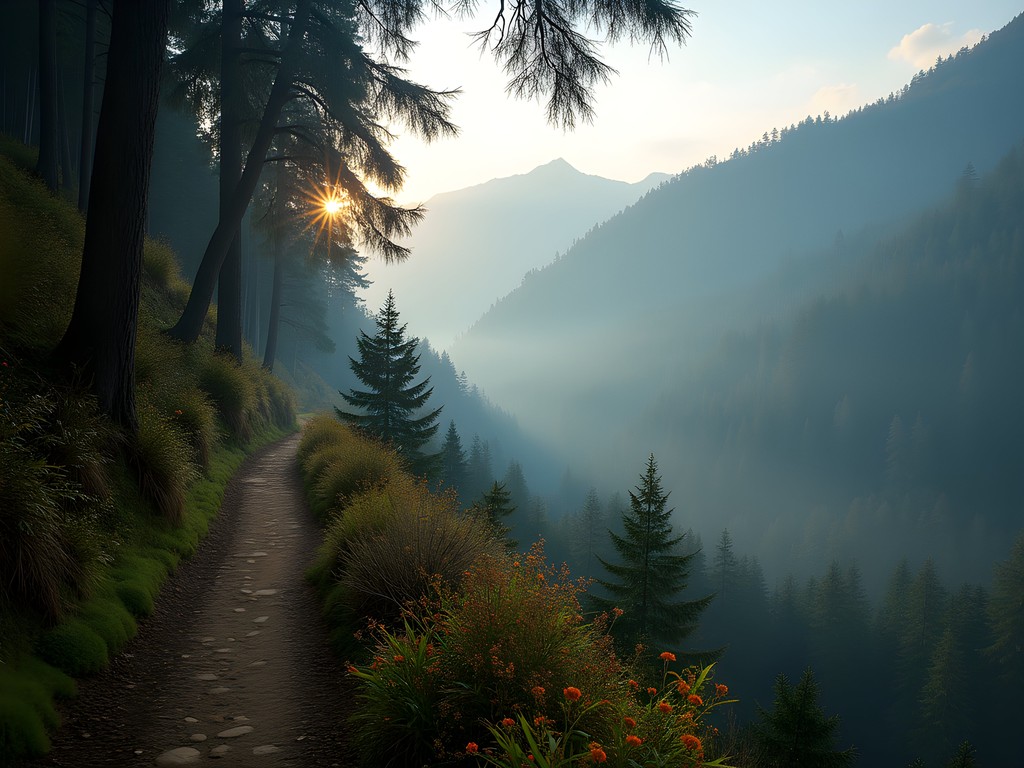
💡 Pro Tips
- Dawn and dusk offer best wildlife viewing opportunities
- Maintain silence on forest trails to increase wildlife sighting chances
- Support local conservation initiatives through donations or volunteer work
Final Thoughts
As my week in Jakar drew to a close, I found myself sitting cross-legged on a monastery floor, watching butter lamps flicker against ancient murals while monks chanted their evening prayers. The Bumthang Valley had delivered exactly what my dual heritage has always sought in travel—the perfect integration of cultural depth with environmental consciousness.
For solo travelers seeking meaningful adventure beyond the usual tourist circuits, Jakar offers rare treasures: trails where you might be the only foreigner for days, monasteries where genuine spiritual practices continue uninterrupted by tourism's demands, and ecological systems functioning in remarkable balance.
What makes Bhutan special isn't just its dramatic landscapes or preserved traditions—it's the intentional approach to development that prioritizes Gross National Happiness over mere economic growth. As travelers, we can learn from this philosophy, carrying its wisdom back to our own communities.
When you visit, tread lightly on these sacred trails. Listen more than you speak. And perhaps, like me, you'll find yourself planning your return before you've even left.
✨ Key Takeaways
- Bumthang Valley offers intermediate trekking with exceptional cultural immersion
- Homestays provide the most authentic and sustainable accommodation option
- Spring brings ideal trekking conditions with moderate temperatures and blooming rhododendrons
- Hiring local guides supports the community while providing invaluable cultural context
📋 Practical Information
Best Time to Visit
Spring (March-May) and Fall (September-November)
Budget Estimate
$200-250 per day (including mandatory tourist fee)
Recommended Duration
5-7 days
Difficulty Level
Intermediate


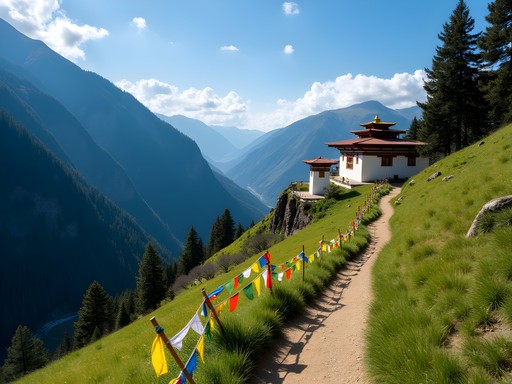
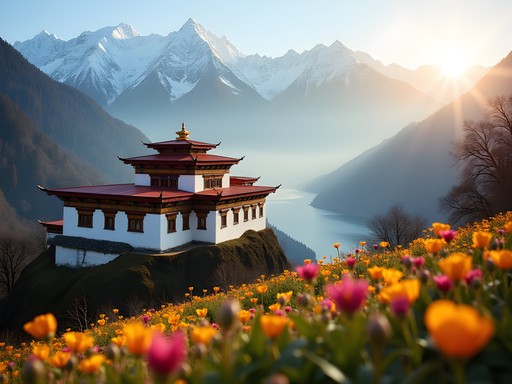
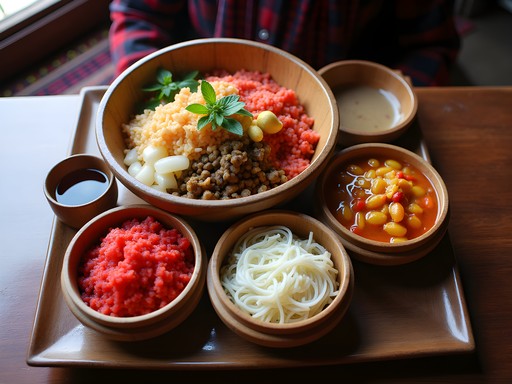
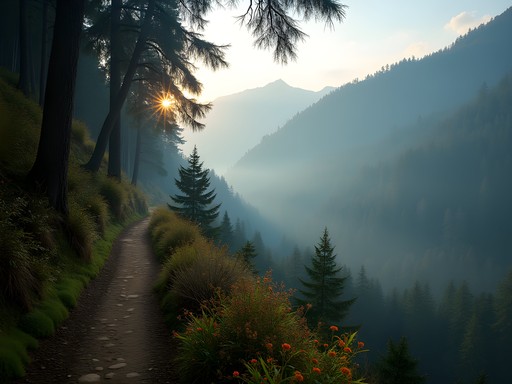


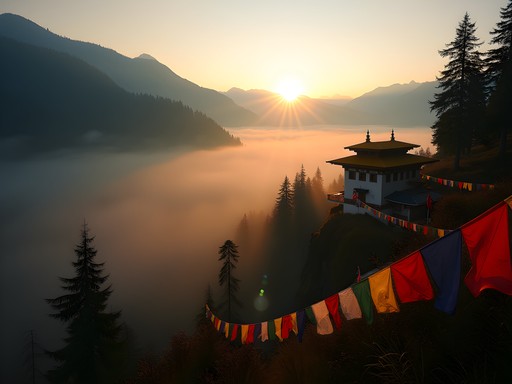







Comments
Claire Hawkins
Ellie, your post brought back so many memories! I visited Jakar with my family last spring, though we didn't trek as extensively with the kids in tow. The Kurjey Lhakhang was magical - my 8-year-old daughter still talks about the butter lamps and how the monk let her help light one. One tip for families considering this region: we found hiring a local guide who was good with children made all the difference. Our guide Tshering turned the monastery visits into treasure hunts and stories that kept the kids engaged with the cultural aspects rather than just being 'bored at another temple.' Did you try the buckwheat noodles at that tiny shop near the Wangdicholing Palace? Still dreaming about them!
Ellie Watanabe
Claire, that's such a beautiful memory with your daughter! I love how experiences like lighting butter lamps can create such lasting impressions for children. And yes! Those buckwheat noodles were incredible - I actually went back twice. Your guide sounds wonderful - making heritage sites engaging for kids is such a skill.
hikingclimber
Just returned from Bumthang two weeks ago! Pro tip: bring layers even in autumn. Mornings at higher elevations were freezing but afternoons got quite warm. The homestay experience in Ura village was a highlight - our host's grandmother taught us traditional weaving techniques that have been passed down for generations.
wanderadventurer
Thanks for the layering tip! Did you need any special permits for the hiking trails?
hikingclimber
@wanderadventurer Your tour operator handles all the permits! The daily tourist fee covers access to most trails, but some remote areas need additional permits that your guide arranges.
exploreking
Just got back from Bumthang myself! Your section on homestays is spot on. We stayed with a family in Ura who taught us how to make ara (the local rice wine) and buckwheat noodles. Definitely the highlight of our trip. Did you try the hot stone bath anywhere? My muscles were so grateful after those long treks!
vacationninja
The hot stone bath sounds amazing! Adding that to my list. How many days would you recommend for the full Bumthang experience?
exploreking
I'd say minimum 5 days, ideally 7. There's so much to see, and the pace is wonderfully slow. Plus you'll want buffer days in case of weather changes for trekking.
wildlife4831
I did a similar trek in Bumthang last year but missed the Tang Valley portion. The monastery visits were definitely the highlight for me too! Did you have any trouble with altitude? I found the first two days pretty challenging until I adjusted. Those homestays are such a special experience - nothing beats eating ema datshi with a local family around their bukhari stove.
Ellie Watanabe
The altitude was definitely noticeable! I spent two days in Paro before heading to Bumthang which helped. And yes, those homestay experiences are pure magic - I'm still dreaming about that homemade ara spirit they shared with us!
wildlife4831
Oh the ara! I forgot about that fiery experience! Did you bring the water filter you mentioned in your gear section? Worth the investment?
Ellie Watanabe
Absolutely worth it! Used it daily and saved countless plastic bottles. The water quality was fine in most places, but it gave me peace of mind, especially in the more remote homestays.
freeadventurer
Those prayer flags against the mountains look incredible! Bhutan has been on my bucket list forever.
Ellie Watanabe
Thanks! The contrast of the colorful flags against the Himalayan backdrop never gets old. Hope you make it there soon!
Casey Andersson
What a beautifully written account of Jakar! I stayed at Wangdicholing Heritage Lodge when I visited and it was the perfect blend of luxury and authenticity. The way you described sitting cross-legged watching the butter lamps flicker - that transported me right back. One tip for anyone planning a visit: I found my trekking poles essential for some of the steeper monastery approaches, especially after rain. The local guides have a saying that each monastery visit cleanses one specific sin - by the end of my trip I must have been practically saintly! Did you try the buckwheat noodles with local cheese? Still dreaming about that dish!
vacationninja
Planning to visit Jakar next spring! How difficult was getting permits for the Tang Valley Trek? And did you find the altitude challenging at all?
Ellie Watanabe
The permits were actually straightforward - our guesthouse arranged everything. For altitude, I spent 2 days in Thimphu first which helped a lot. Take it slow the first day in Bumthang and you should be fine!
exploreking
I'll add that a good tour operator makes all the difference with permits. We used Bhutan Namdruk Adventures and they handled everything. For altitude, I found my portable oxygen canister really helpful just as a backup, though I only needed it once.
hikinglife
Planning to visit next spring - is there a particular month you'd recommend for the best weather in Bumthang?
Casey Andersson
I was there in April last year and it was perfect - clear skies, moderate temperatures, and the rhododendrons were in full bloom. Just magical! Avoid the monsoon season (June-August) if possible.
Nicole Russell
Ellie, your post brought back so many memories of my solo trek through Bumthang last year! The Tang Valley was such a highlight - that moment when you crest the ridge and see the valley unfold below you is UNREAL. I actually stayed with a family in Ogyen Choling who taught me how to make ara (local rice wine) and we spent the evening sharing stories despite the language barrier. Did you get a chance to visit any of the local textile workshops? The natural dyeing processes they use are fascinating!
freeblogger
Nicole, how difficult would you say the Tang Valley trek is for someone with moderate hiking experience? And did you need a guide?
Nicole Russell
@freeblogger It's definitely manageable with moderate experience! Some steep sections but nothing technical. And yes, guides are mandatory in Bhutan - but honestly, they enhance the experience with cultural insights you'd otherwise miss. Worth every penny!
oceanseeker
Your photos of Kurjey Lhakhang took me right back to my visit last year! The way you described that moment with the butter lamps and ancient murals - I had almost the exact same experience. Did you get a chance to talk with any of the monks? They shared some incredible stories with us about the temple's history that weren't in any guidebook.
Ellie Watanabe
Yes! One elderly monk showed me hidden details in the murals that I would have completely missed. Those unplanned encounters really make the journey special, don't they?
oceanseeker
Absolutely! Those moments are what I remember most from Bhutan. The formal tours were great, but it's the spontaneous connections that stick with you.
Venture X
Premium card with 2X miles, $300 travel credit, Priority Pass